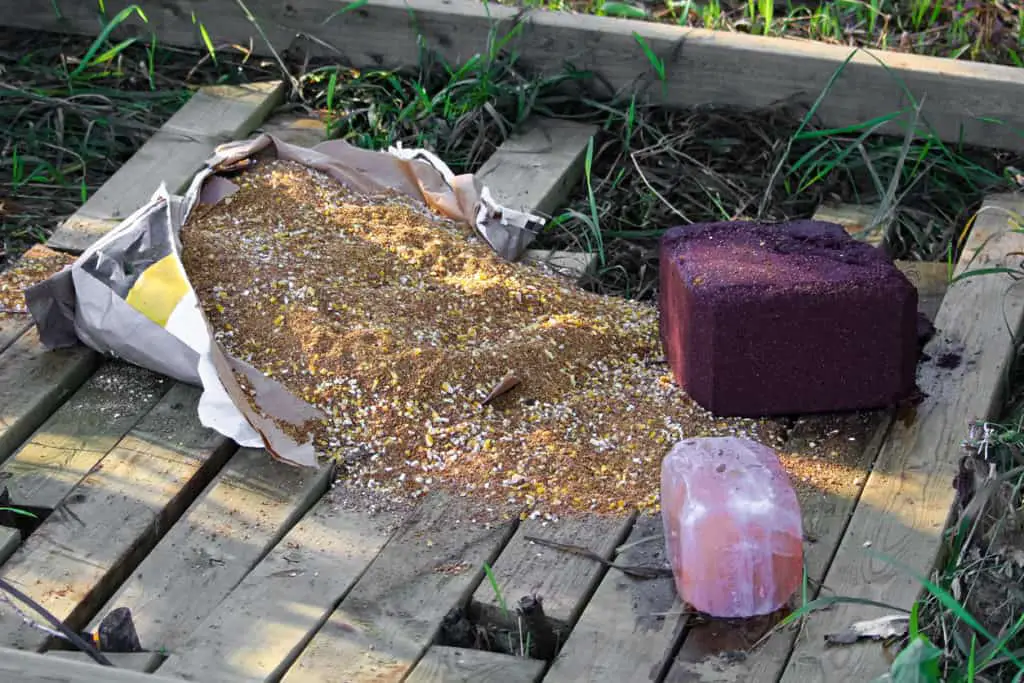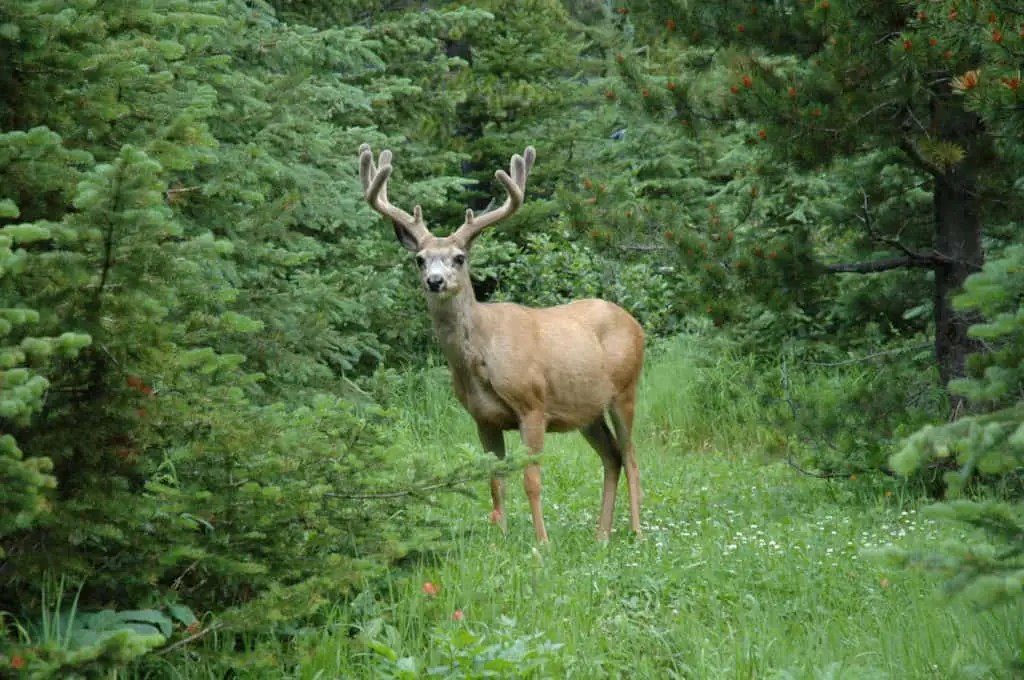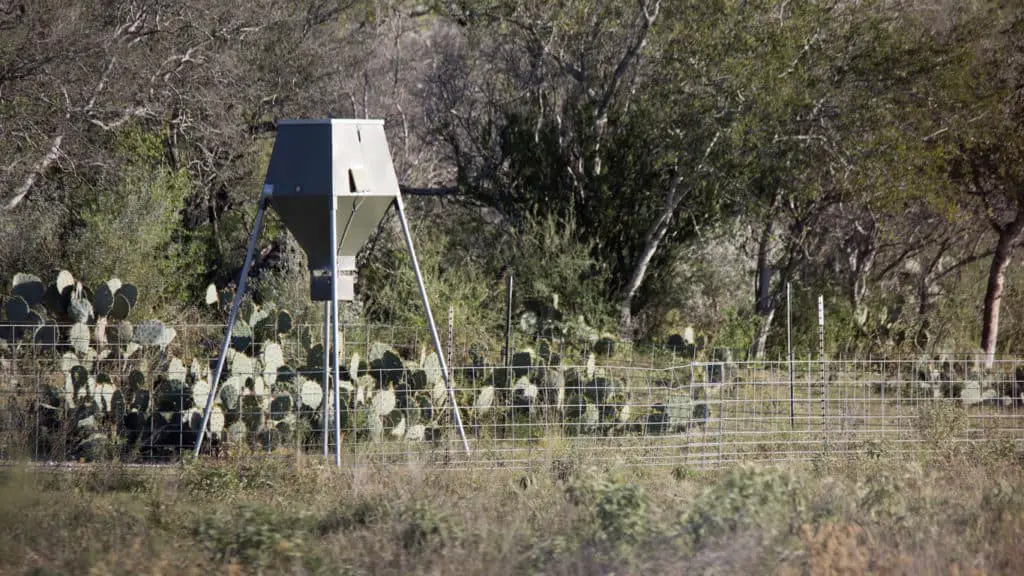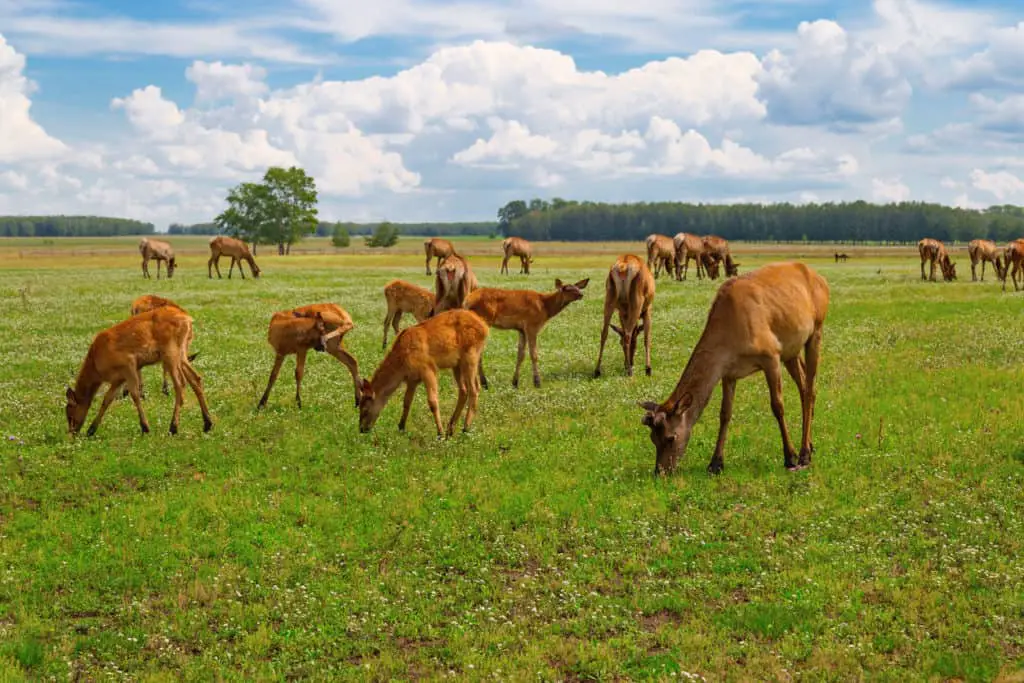Deer feed works. The most expensive deer feed mixes work exactly as advertised. But so do a $5 bag of apples or a $10 sack of corn. There is no argument against the effectiveness of using deer feed and baiting while hunting.
Baiting deer works so well that many hunters find it unethical, and some states prohibit it. But take a walk through any hunting store, Walmart, or Tractor Supply during deer hunting season. I’ll guarantee you they had to hire an extra forklift operator to keep up with the demand—even in states where using deer feed is illegal.

Deer feed is also one of the most straightforward products to use. If you came here to find out how to bait deer, here is the perfect deer baiting set-up.
- Locate a place where you want deer to stand still for a long time.
- Stand in the middle of it, tear open a bag of deer feed, and see if there are any instructions on the bottom of the bag.
- Wait (maybe a day or two, or maybe 13 seconds).
So, if deer feed is effective, easy to use, and simply a matter of following state laws or your ethical beliefs—what’s the problem?
Related: 4 easy to avoid deer hunting mistakes.
Related: Deer food plotting for beginners.
Deer feeding: All those in favor say ”Aye.”
The first time I walked the woods of my new property in New York, I came across what I initially thought was the largest midden pile in the world. Here, nearly a 1/2 mile from any road and tucked deeply into the thick woods; some poachers had poured about 200 pounds of sweet feed into the middle of a clearing. They’d also cut down a large tree and driven a bunch of nails into the stump to hold two deer blocks.
Following their sign, I traveled 2.2 miles before I found the closet spot an ATV could have gotten to their bait pile. I’m sure it had to be a two-person job, with both men walking nearly 10 miles to bring the cutting tools and 50 lb bags of feed from a disused logging road miles away.
Unfortunately, I never got to meet the folks who cleared a space in my woods, snipped a ton of branches, cut down a big Maple tree, dumped hundreds of pounds of illegal deer bait, and set up one pink plastic chair while trespassing on my property.
Nope, I wasn’t mad, and I treat all trespassers as lost hunters. Yes, I’m a big, former Marine Sergeant, but I admire a strong work ethic. The shame here is that I never got to meet and hire these (two?) dedicated workers.
No, what I am truly sorry about is never getting a chance to interview them (off the record, of course). If there are people more committed to using deer feed as bait—I’ll never meet them.
Related: The best hours of the day to hunt deer.

The benefits and hazards of feeding deer.
Where it is legal, there are many benefits to feeding deer if you are deer hunting. I’ll make a distinction here—because feeding them because you feel sorry for them probably isn’t a good idea (more on that later).
If your hunting spot is near public land, a bait pile will pull deer onto it. If you hunt on a tiny piece of land, baiting is about the only chance you’ll get to take a deer in a safe location. Baiting can be used in conjunction with trail cams to help you scout an area. And a deer bait feeder ensures they will keep returning without you putting pressure on them by constantly returning to resupply your bait pile.
Using deer mineral licks as bait.
Deer licks are rare in nature, but very beneficial to deer herd health. They are so rare, however, that some states have begun to allow the use of artificial salt licks. The theory is that all deer must travel to a limited number of deer licks for they need to survive. So, let’s say an area has three natural salt licks, and every local deer must travel to one or more. How soon does a deer with Chronic Wasting Disease (CWD) end up there and infect all the other deer that visit the spot? By allowing hunters to place (dozens, hundreds?) of salt licks, it is believed the spread of CWD is diminished.
Salt licks come in a powder/liquid, block, or rock form. Powders and liquids are poured on the ground and cover large areas. There is no mixing required for most, and little chance it will be discovered or noticed by other hunters.
Block salt licks stand up better to rain and are much lighter to carry. The only problem with a block lick is its readily recognized form. If you put it on public land, you’ll share your spot with everyone who sees it.
Rock salt licks are heavy but all-natural and easy to overlook on public land. If the science behind the theory that artificial salt licks reduce CWD turns out to be true, this will be good news for the deer, deer hunters, and the miners in Utah who harvest the rocks.
Related: Is deer hunting in the rain worth it?
Related: How much wind is too much for deer hunting?
Feeding deer corn in the winter.
According to the experts in Maine:
“Three main factors impact winter survival:
- Winter severity.
- Body condition going into winter as determined by availability of high quality foods in the summer and fall.
- Adequate softwood cover in the winter.”
Maine authorities would like you to understand that just because deer will eat the corn you put out for them doesn’t mean they need it or benefit from it.
During the regular deer hunting season, a deer’s body prepares for winter. The deer now rely on energy conservation, fat reserves, and a diet of woody vegetation to survive until spring—not carbohydrates. So when deer eat lots of corn, their systems cannot digest it.
Have you ever gutted a deer and found its belly full of undigested corn? It may be your neighbor is baiting them, but it could be something they ate three days ago. Either way, chances are good other deer around you are already dying with their bellies filled with worthless corn.
Related: How coyote hunting helps deer survival.

Feeding deer corn during deer hunting season can harm the entire herd.
A pile of corn, especially one that is routinely replenished, can seriously and negatively alter your local deer habitat and your herd’s behavior.
While your deer baiting goal is to bring one trophy buck within shooting range, you draw many other deer and animals. Feeding deer causes deer to concentrate in unnaturally large numbers and interrupts their regular migration pattern. Once you stop feeding them, they are trapped in a concentrated location, in such numbers as to rapidly deplete the local, natural food sources and face starvation.
And if the inappropriate diet you provide them doesn’t kill them, then the coyotes and wolves that find the herd you’ve trained to assemble in such numbers will.
If you insist on using corn, you can take a few steps (provided by Maine)to mitigate these hazards.
- Wait until December, and there is a lot of snow on the ground. The deer who find this corn will have already migrated and intend to spend winter here.
- Deposit feed in small amounts and frequent, distant locations—every day. Spread out your bait piles, accept the risk of missing finding a buck at one specific place, and prevent the deer from becoming too competitive with each other.
- Don’t use corn; use cattle or deer feed in pellet form.
- Keep feeding until spring.
If you are feeding because you are a deer hunter and not a deer lover, you won’t follow these tips—you are after a rack, free venison, or both. But you will not be willing to pay $2,000 to feed a local herd of deer through an entire winter.
I’d tell you never to put another ounce of corn down as deer bait, but I know many deer hunters will ignore my advice. And I assume many deer probably die of diabetes in New York from all the sugar-coated corn illegally placed on huge bait piles within miles of me.
Related: The thee best deer hunting calibers.

Deer feed: The good stuff.
Feeding deer a safe, healthy food source requires timing and planning.
Are you logging for firewood? The tops of hardwood trees are a favorite browse for deer. Got a small parcel you can install a food plot in? Plant some pasture mix grasses, apple trees, deer radish, sugar beets, or winter bulbs.
A food plot will bring the deer to you and provide them with all the nutrition they need to thrive all year.
Sure, it may still be considered by some as deer bait, but a food plot is deer feed you can be proud of.

